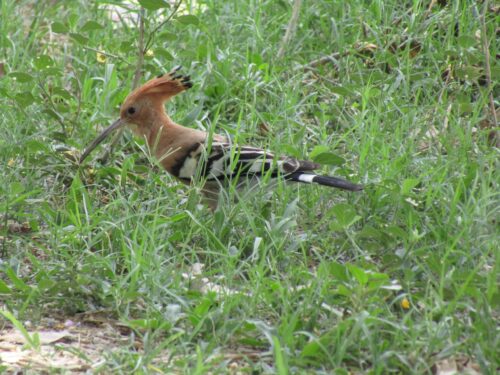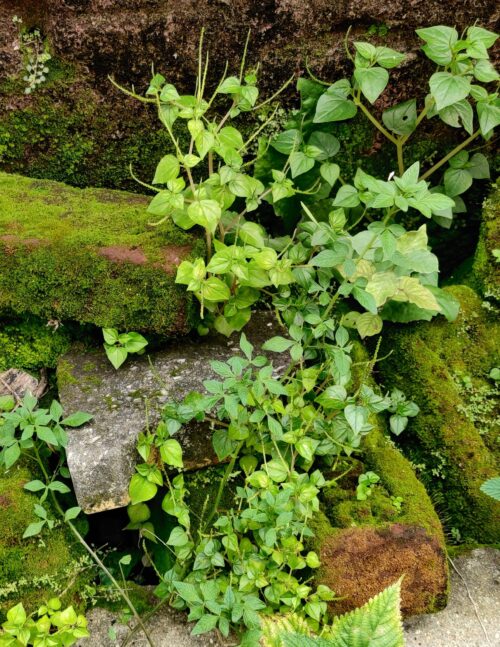A Pesticide is a chemical substance of natural or synthetic origin. It is applied in different forms to kill pests. Pests are living organisms that tend to harm humans, their crops and animals or have a tendency to disturb general household and living conditions. Some organisms can also be applied to kill pests. These organisms are called as biopesticides. On the other hand, pesticides that are synthesized in factories are called as synthetic pesticides.
Human beings started using pesticides in agriculture since the popularization of strategies of the Green Revolution. Industrialists started synthesizing pesticides in factories and farmers started buying them from markets for killing plant pests including insects, worms, fungi, nematodes, and viruses (?). Gradually, the application of pesticides spread widely in different areas of human life. For example, these came to common domestic use for killing mosquitoes, germs, mites, germs and even rats.
Later it was observed and felt that pesticides contaminated soils, killed soil flora and fauna, caused poisoning of lakes, ponds and other water bodies through surface run-offs; accumulated in grains, milk (even in mothers’ milk) and other food items, and in fatty tissues of animals including human beings, and caused extinction of many animals including birds. This is the reason why the manufacture, sale, use and export of many pesticides have been banned in many countries of the world. Bordeaux mixtures, Hexachlorobenzene, Heptachlor, Malathion, and Aldrin etc. are examples of some pesticides.
The High Yielding Varieties of Crops remain vulnerable to varieties of pests and diseases due to their poor resistance. So, varieties of pesticides are needed to be used to prevent and care for the infestation or the outbreak of pests.
Agrochemicals that are used to kill or repel away pests are called as pesticides. There are two types of pesticides- natural and synthetic. Natural products or things that are used to kill or repel pests are called as natural pesticides. Garlic extract, Neem extracts, and extracts of certain other plants besides many other substances that no longer remain poisonous to humans and animals are called as natural pesticides.
Synthetic and often toxic and poisonous substances that are synthesized in chemical factories and are used against pests either to repel them away or to kill them are known as synthetic pesticides. However, after some time, the pests develop resistance to pesticides, so the intensity and frequency of pesticides must be increased every time. This results to the investment of a good sum of money, which can be afforded by rich farmers only. Thus, the green revolution has been favouring the growth and prosperity for rich farmers only. Over 90 per cent of the sprayed pesticides reach a destination other than their target species, including undesired species of plants and animals, air, water, bottom sediments, and food.
In many ecosystems, it has been found that pesticides kill both pests and natural predators. This condition creates a secondary outbreak of pests which usually remains most damaging. Pesticides, after they join the food chain and travel to the top consumer cause serious biomagnifications. They get deposited in the fatty tissues of animals and human beings where their potency goes on increasing.
Severe cases of renal failure, brain damage, blindness and impotency have been reported due to biomagnifications of pesticides. Even the smallest quantity of these chemicals can cause long term and widespread impacts as they are in the food chain connected to a vast variety of birds and amphibians.
Here are some examples of how some pesticides are harmful to the biotic components of the environment –
1. Pesticides, when sprayed, or dusted on crop plants or garden plants, they cause adverse impacts on honey bees, other pollinators, parasites and predators. Continuous use of pesticides leads to the development of pesticide resistance in different pests. This adversely affects the non-target organism that is the organisms that the pesticide is not meant for.
2. Endosulphan, Linden, Malathion, Chloropyriphos, and many others are highly poisonous to aquatic organisms like amphibians and fish, and also to some terrestrial animals like birds, bees and wildlife. These pesticides cause acute toxicity to the liver and kidney, heart, blood, lungs and skin.
3. Aldrin, Di- aldrin, Endrine etc. are a group of highly toxic chemical pesticides that join the food chain and cause serious ailments in the bodies of consumers. Some of the minor troubles caused by traces of these pesticides are –loss of memory, mental retardation, loss of weight, and impotency.
Chlorinated Hydrocarbons are another group of pesticides that are deposited in the fatty (Adipose) tissues of animals where they are magnified gradually, and cause serious conditions in the later course.
An ideal pesticide is considered to have the following characteristics –
1. It should be a “broad Spectrum” type of pesticide to kill pests or to do the intended job.
2. It should be non- toxic to mammals, and even to plants.
3. It should have easy formulation and have low cost of production.
4. It should have less toxicity to beneficial insects, and optimal residue persistence.
5. It should be compatible to other pesticides.
6. It should neither be inflammable nor corrosive to metals.
7. It should not produce bad taste on fruits and vegetables on which it is dusted or sprayed.
Some of the major classes of Pesticides are being introduced below-
1. Fungicides: Chemical substances that are applied for killing fungi that cause diseases of plants and animals are called as fungicides. Bordeaux mixture, ditheocarbamates, captan, Dicarboximide, Hexachlorobenzene (HCB), Ethylene thiourea (ETU), and Benzoimidazoles etc. are examples of some groups of fungicides. Fungicides can either be contact or systemic. A contact fungicide kills fungi when sprayed on its surface; a systemic fungicide has to be absorbed by the plant.
2. Herbicides: Synthetic chemicals that are applied for killing herbs or weeds are called as herbicides. Some plants produce natural herbicides, such as the genus Juglans or walnuts. The natural Herbicides are applied in Total Vegetation Control (TVC) Programs for maintenance of highways and railroads. Smaller quantities are used in forestry, pasture systems, and management of areas set aside as wildlife habitat. Herbicides are widely used in agriculture and in landscape turf management. In the U.S., they account for about 70% of all agricultural pesticide use. Simazine, 2-4D (2-4 diphenoxyacetic acid), Triazines, Bipyridyls, and Diurons, etc. are two examples of herbicides.
3. Insecticides: Synthetic and poisonous chemicals that are used for killing or repelling insects, are called as insecticides. Heptachlor, Baygon, TEPP, Parathion, Malathion etc. are examples of insecticides.
4. Nematicides: Synthetic and poisonous chemicals that are used for filling small worms or nematodes are called Nematicides- powder, aldrin, endosulfan etc. are some Nematicides.
5 Rodenticides: Synthetic Poisonous Substances that are applied to kill or repel rodents like rats are called as Rodenticides. Some important rodenticides include Zinc phosphorus, Sodium fluoroacetate, Norbormide, and Strychnine.
The Chemical Natures of Pesticides (insecticides, herbicides, Nematicides, fungicides, etc.) differ from chemical to chemical. These are formulated as granular substances, Powders, wettable substances, emulsions, and solutions. These may be applied as – spot treatment, broadcast, sprays, and dusts, placed in bands or put directly on the plant. The optimum date and application of pesticides depend on the crop stage, weed stage, weather conditions etc.
The future of Agrochemicals – pesticides, and herbicides is under unending debate. These substances cause undesirable effects on the environment and can be toxic to a wide range of organisms. Hence, an increasing amount of care in using agrochemicals is demanded by law, along with the increasing use of new chemical control techniques.




